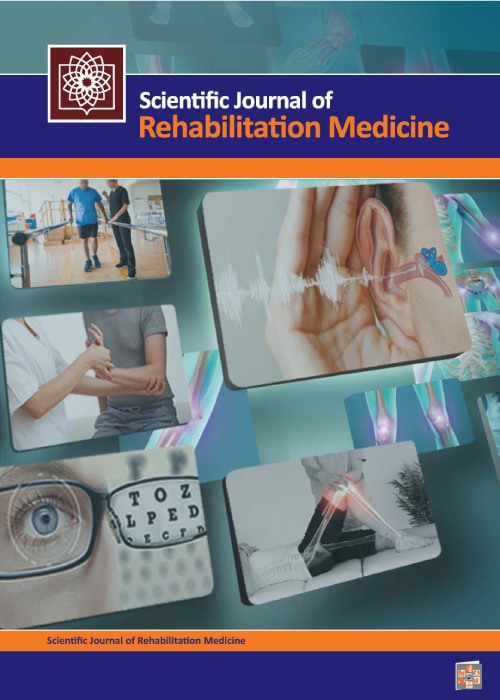Detection of Compensatory Mechanism during Gait in Individuals with Functional Ankle Instability Using Inversion Perturbation
Delayed neuromuscular responses is among the most important lesions in individuals with Functional Ankle Instability (FAI), which indicates using the compensatory mechanisms. Since most of body movements occur in closed-kinetic chain, the distal lesions can affect the proximal sections leading to the use of compensatory strategies. The aim of the present study was to investigate the compensatory strategies during gait in individuals with FAI using inversion perturbation.
Material and
Seven healthy individuals (age 23.40± 1.70 years; weight 72.25 ± 6.14 Kg; height 176.32 ± 6.41 cm) and seven individuals with FAI (age: 24.31± 0.81 years; weight: 71.15 ± 7.21 Kg; height: 175.12 ± 4.28 cm) volunteered in the present semi-experimental investigation. Electrical activation of the peroneus longus, tibialis anterior, gluteus medius, and erector spine muscles during gait on the inversion perturbation system was measured using the wireless EMG system. Response Time to Perturbation (RTP) in electrical signals of the muscles was extracted using MATLAB and analyzed running independent T-tests (p
FAI group, as compared with the healthy group, indicated a significant longer RTP in the peroneus longus and erector spine muscles (p
The results of the current study showed that RTP differ in FAI group compared with that in the healthy group. Early recruitment of gluteus medius muscle in FAI group is indicator of using the hip-based strategy to control posture. Since the FAI individuals have lesions in muscle surrounding the ankle, ankle-based strategy is not enough to response the perturbation,; therefore, the dominant strategy for controlling the posture is hip-based strategy. Alterations in RTP are reported due to variation in the central neuromuscular control, so it is suggested that practitioners focus on detecting the compensatory mechanisms.
- حق عضویت دریافتی صرف حمایت از نشریات عضو و نگهداری، تکمیل و توسعه مگیران میشود.
- پرداخت حق اشتراک و دانلود مقالات اجازه بازنشر آن در سایر رسانههای چاپی و دیجیتال را به کاربر نمیدهد.


